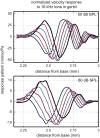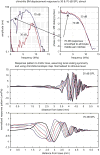Von Békésy and cochlear mechanics
- PMID: 22633943
- PMCID: PMC3572775
- DOI: 10.1016/j.heares.2012.04.017
Von Békésy and cochlear mechanics
Abstract
Georg Békésy laid the foundation for cochlear mechanics, foremost by demonstrating the traveling wave that is the substrate for mammalian cochlear mechanical processing. He made mechanical measurements and physical models in order to understand that fundamental cochlear response. In this tribute to Békésy we make a bridge between modern traveling wave observations and those of Békésy, discuss the mechanical properties and measurements that he considered to be so important, and touch on the range of computational traveling wave models.
Copyright © 2012 Elsevier B.V. All rights reserved.
Figures










References
-
- Allen JB, Neely ST. Micromechanical models of the cochlea. Phys Today. 1992:40–47.
-
- Békésy G. Zur Theorie des Hörens; die Schwingungsform der Basilarmembran. Phys Zeits. 1928;29:793–810.
-
- Békésy G. Experiments in Hearing. McGraw-Hill; New York: 1960.
-
- Békésy G. Concerning the pleasures of observing, and the mechanics of the inner ear. Nobel Lect 1961 Dec 11;
-
- Brass D, Kemp DT. Time-domain observation of otoacoustic emissions during constant tone stimulation. J Acoust Soc Am. 1991;90:2415–2427. - PubMed
Publication types
MeSH terms
Grants and funding
LinkOut - more resources
Full Text Sources
Other Literature Sources

